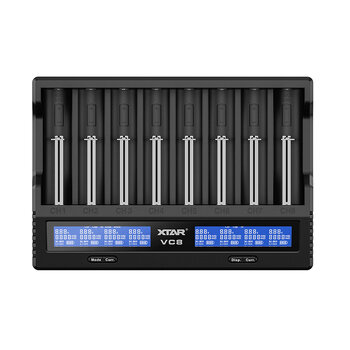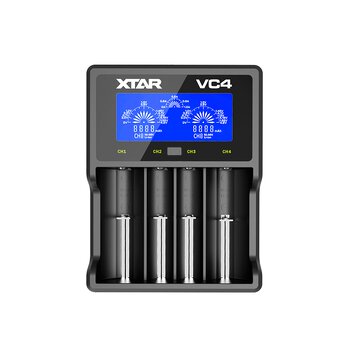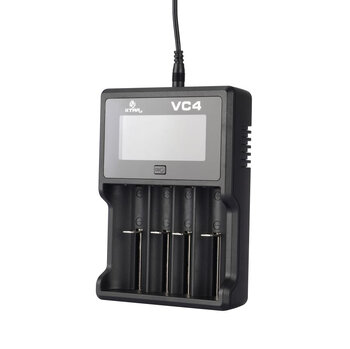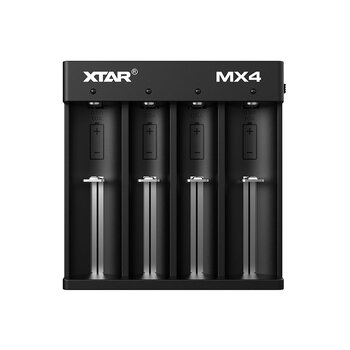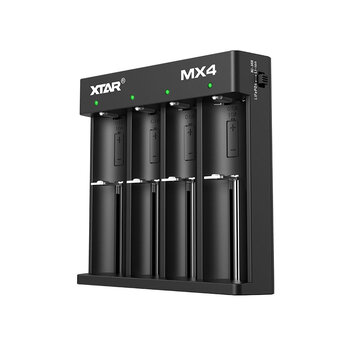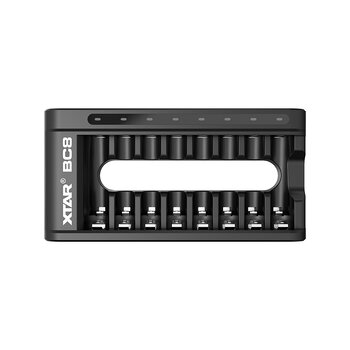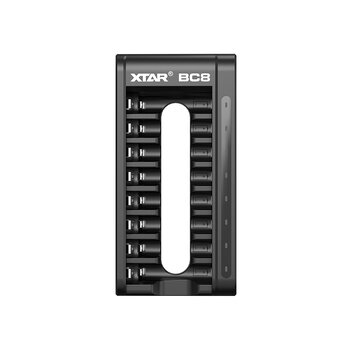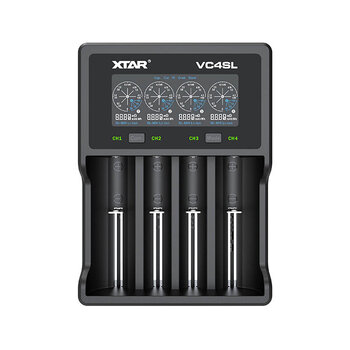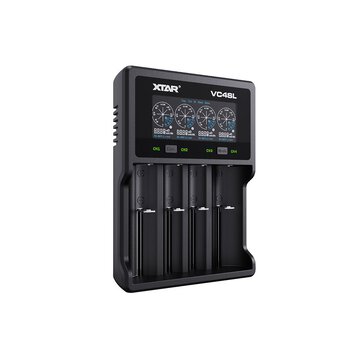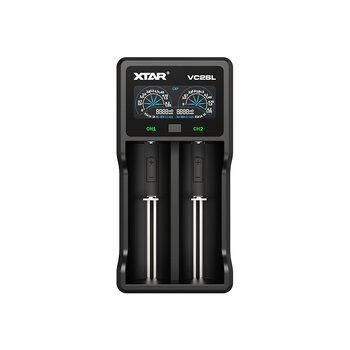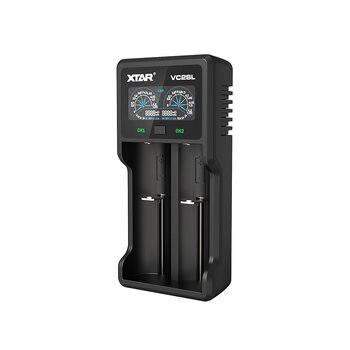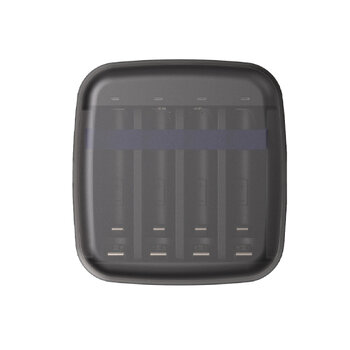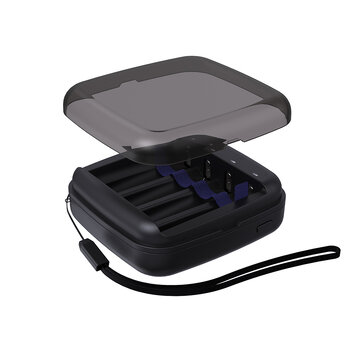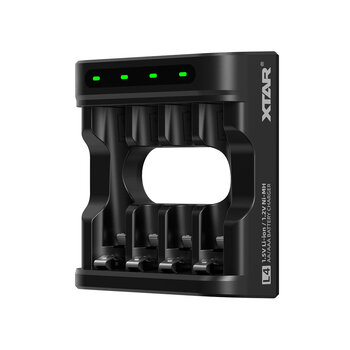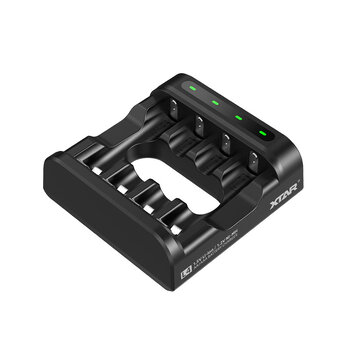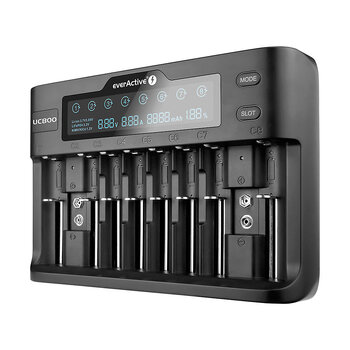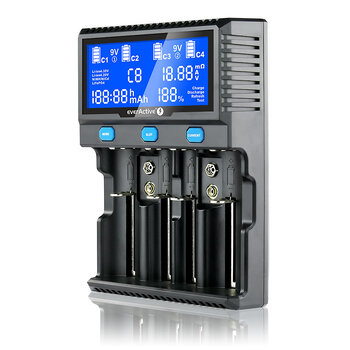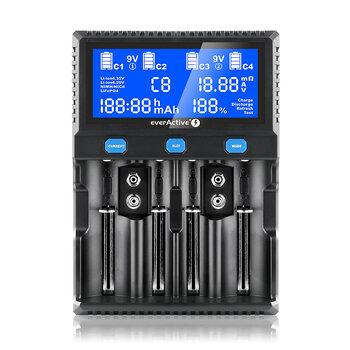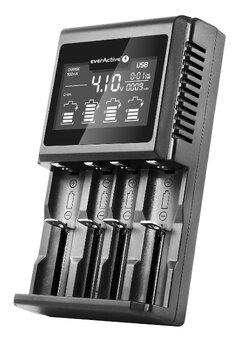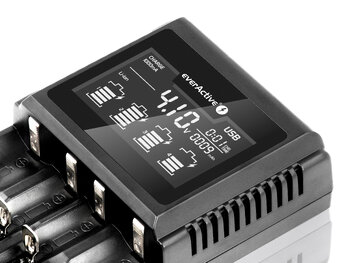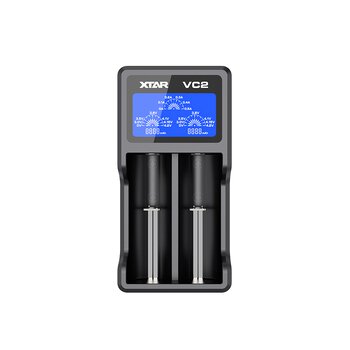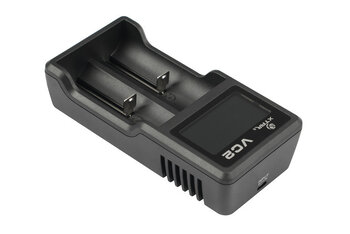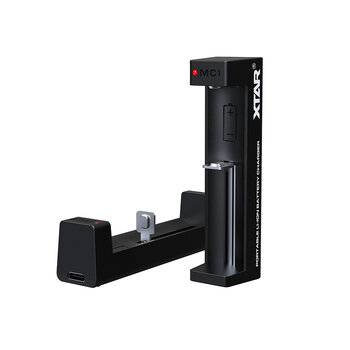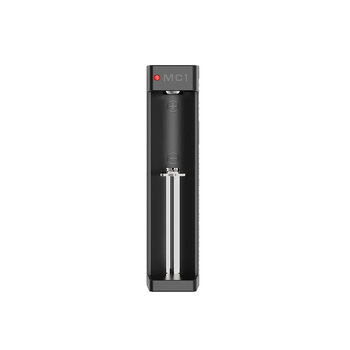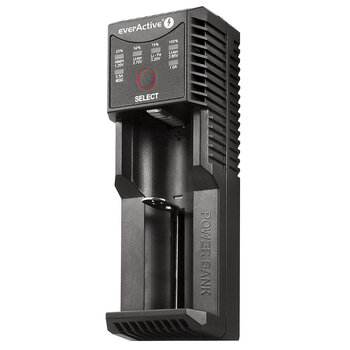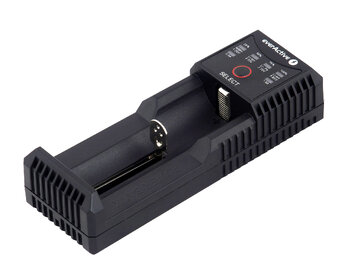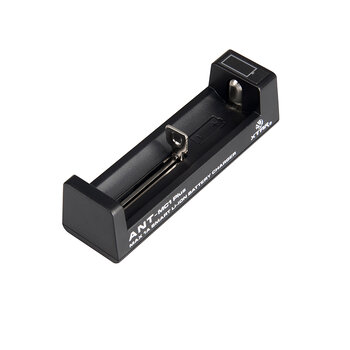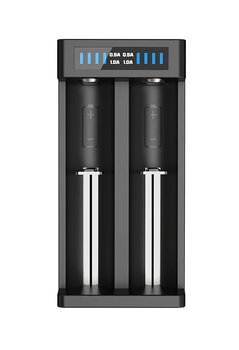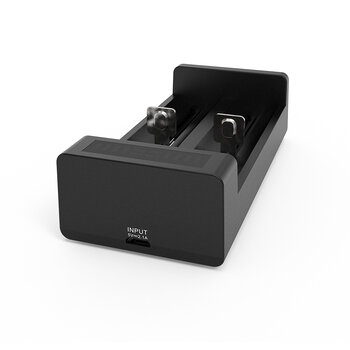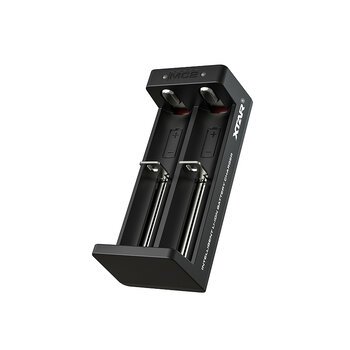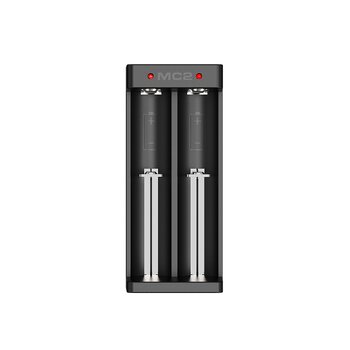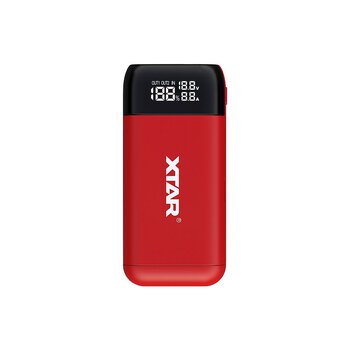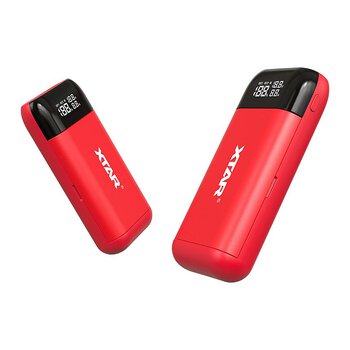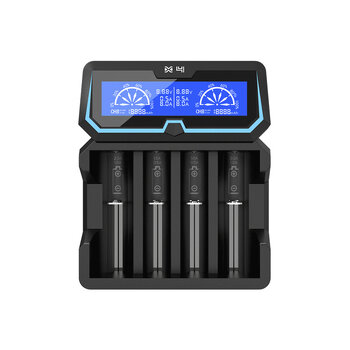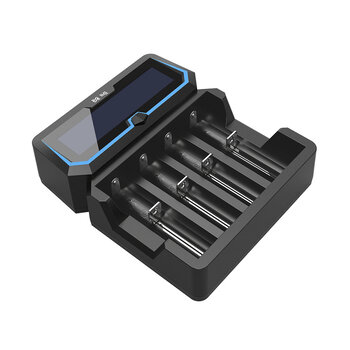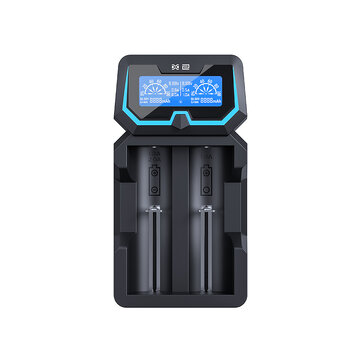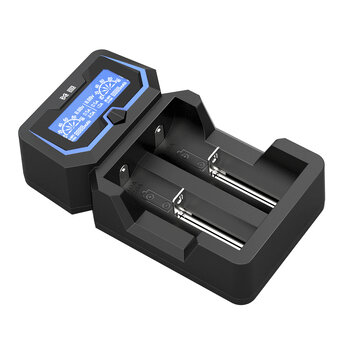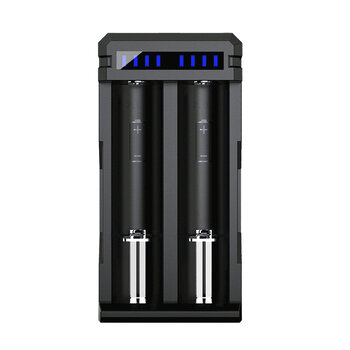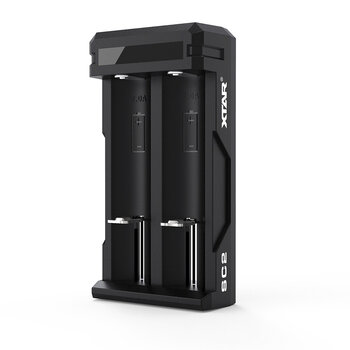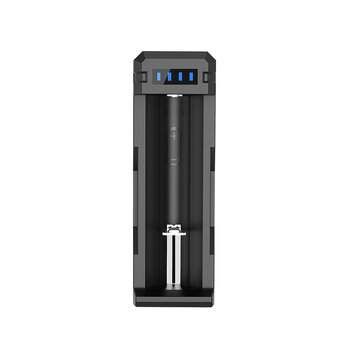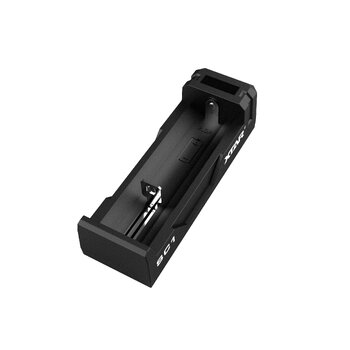Professional, four-channel, compact processor charger
Xtar VC8
for Li-ion and Ni-MH batteries in sizes 18650, AA, AAA and other...
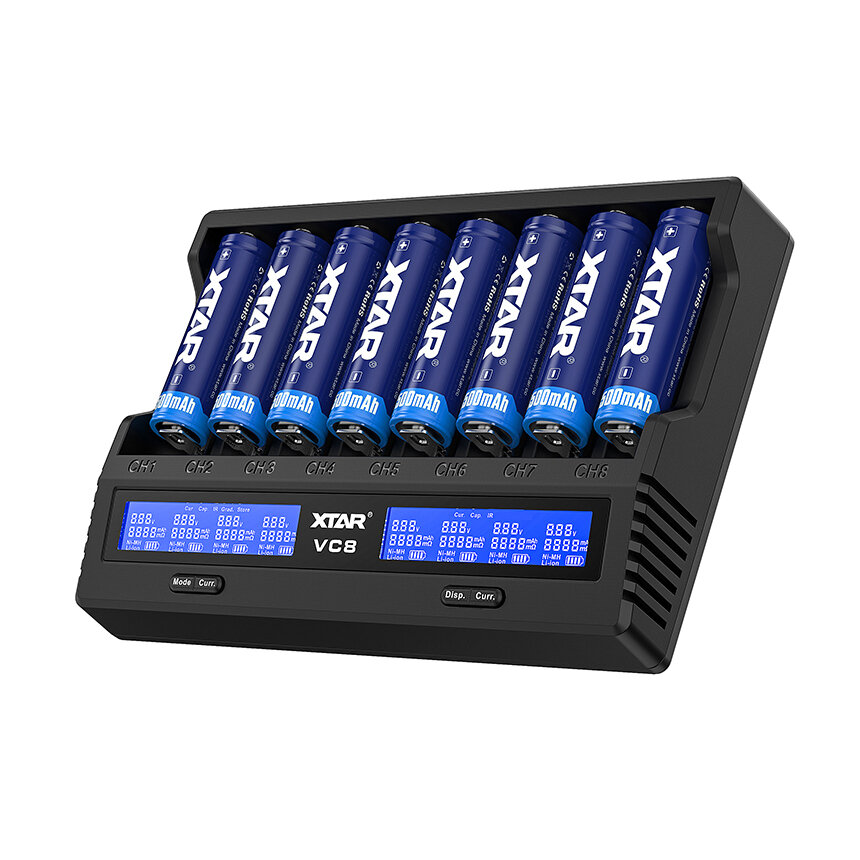
| Key features • Charging Li-ion batteries with a three-stage TC/CC/CV charging process • Charging Ni-MH batteries using 0ΔV and -ΔV • eight independent charging channels • adjustable charging current • LCD display indicating cell voltage and charging current and internal resistance • indicates the current used to charge - the ability to measure the cell capacity (measurement error ±5%) • powered by any USB charger with USB port or USB port on your computer • function of reactivation of deep discharged cells • protection: short-circuit, thermal, against reverse polarity |
| Xtar is a renowned manufacturer of high quality Li-ion chargers, flashlights and Li-ion batteries. Xtar products are sold in more than 120 countries, including min. Germany, Japan and Russia. For the production of chargers Xtar uses the highest quality materials - from plastic housing to efficient electronics. All Xtar chargers are CE certified in European markets. |
VC8 is a professional processor charger with three-stage charging process TC/CC/CV for Li-ion cells and 0ΔV and -ΔV for Ni-MH batteries. Charges 1-8 Li-ion 3.6 / 3.7V and Ni-MH cells of any capacity in sizes AAA/R03, AA/R6, 10440, 14500, 14650, 16340, 17500, 17670, 18350, 18500, 18650, 18700. In two extreme channels it is possible to charge batteries with low internal resistance even with 3A current (only 1 cell).
The Xtar VC8's backlit LCD display shows up-to-date information about the charger's operating status: the voltage of the charged batteries, the charging current, the charge used to charge the cells, the internal resistance of the cells, indicates errors and informs the end of charging. You can change the type of information displayed at any time by pressing the "disp" or mode button. Switching between charging modes is possible by holding down the mode/displ buttons longer. Charging current at any time can be changed to higher / lower - the charger measured the internal resistance of the cell and negotiates the maximum (optimal) charging current. Use the "Grad" option to measure battery capacity. After completing the process of assessing the quality of the cell from the display, you can read the battery capacity and there is an internal resistance.
The maximum charging current is 3A and is only available for two extreme channels and only when the middle channels are not used - the maximum charger with this current is able to charge 1 battery at a time. If 2 batteries are placed, the maximum charging current will be 2A. If 4 cells are placed, the maximum charging current will be 1A. maximum charging current will be limited to 0.5A.
What is the TC/CC/CV charging method? It is a three-stage li-ion cell charging process that ensures that the cell is maintained in good condition by charging with the right current at each stage and completing the charging process at the right time.
The different stages of the TC/CC/CV process are:
• TC phase: cells discharged below 2.9V are 'awakened' by a lower current.
• CC phase: When 2.9V is reached, the cell is charged with a constant current of 0.1A to 1A (depending on the power source used and the number of batteries charged).
• CV phase: when the cell is almost charged, the charger switches to charging with a decreasing current until the 4.2V voltage on the cell is reached. After reaching 4.2V, the charging process is complete - the battery is fully charged.
The charged batteries left in the charger will undergo a natural self-discharge process. Charging of Li-ion batteries will resume when the voltage on the battery drops below 3.9V. For Ni-MH batteries, charging is not resumed when the voltage due to self-discharge decreases.
The Xtar VC8 charger has the function of reactivating deep discharge cells and 0V cells. Many chargers on the market are unable to charge such batteries. Here comes the Xtar VC8 charger,which in many cases allows you to 'rescue' such cells. Simply insert a deeply discharged battery into the VC8 charger, as with normal charging , the charger will detect the discharged cell and attempt to reactivate it.
Attention! Cells discharged below a certain level are irreparably damaged and may not be able to be reactivated. Avoid too deep discharge of Li-ion and Ni-MH batteries - this can significantly reduce their durability and capacity or lead to their complete failure.
Complete with Xtar VC8 charger we get a USB cable. No power supply is included. A QC3.0 (9V / 2A) charger is needed to power the charger. It is possible to use a weaker power supply, VC8 will adjust the charging current to the capabilities of the power source.
| Product data | |
| Manufacturer | Xtar |
| charger model | VC8 |
| supported battery types | 1-8 Li-ion batteries 3.6 - 3.7V, protected and unprotected 1-8 Ni-MH batteries |
| supported battery sizes | AAA, AA, R14, 10440, 14500, 14650, 16340, 17500,17670, 18350, 18500, 18650, 18700, 20700, 21700, 22650, 25500, 26650, 32650 R14, R20, 20700, 21700, 22650, 25500, 26650 |
| maximum battery length | 71mm |
| charging method | Li-ion - processor-controlled TC/CC/CV NiMH - processor-controlled 0ΔV and -ΔV |
| Charging | 1x 3A (only in one of the two extreme channels 1 and 8) 2x 2A / 4x 1A / 8x 0.5A |
| end voltage Li-ion charging |
4.2V ±0.05V |
| Li-ion scheduing current | <120mA |
| LCD functions |
current indications: working/charging status |
| additional features | reactivation of deep discharged 0V cells and cells cell capacity measurement |
| Security | Thermal short-circuit, before the battery is reversed |
| input voltage and input current |
QC 3.0 (5V/2A | 9V 2A) - USB Type-C port |
USB type-C cable,
Manual

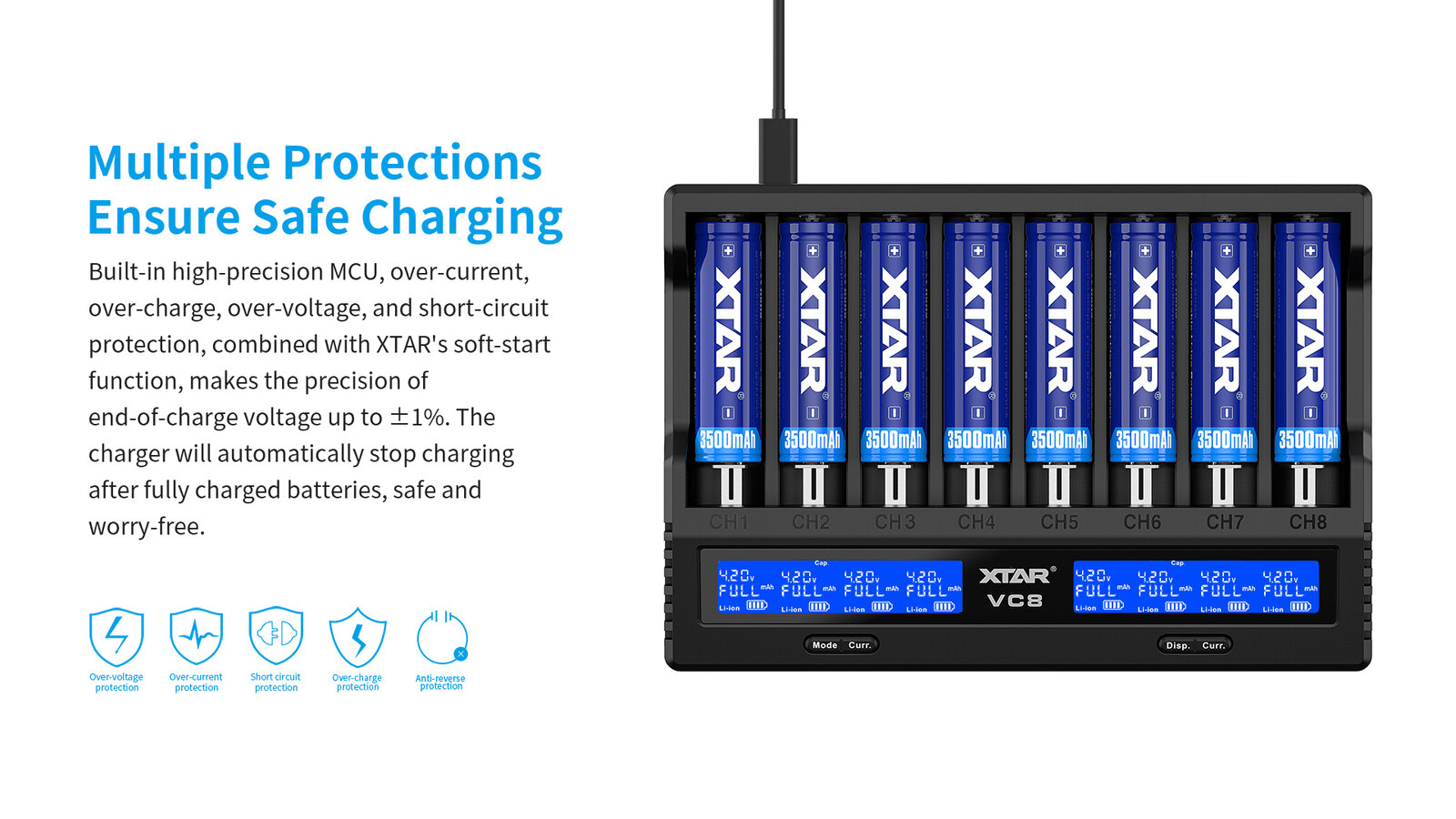
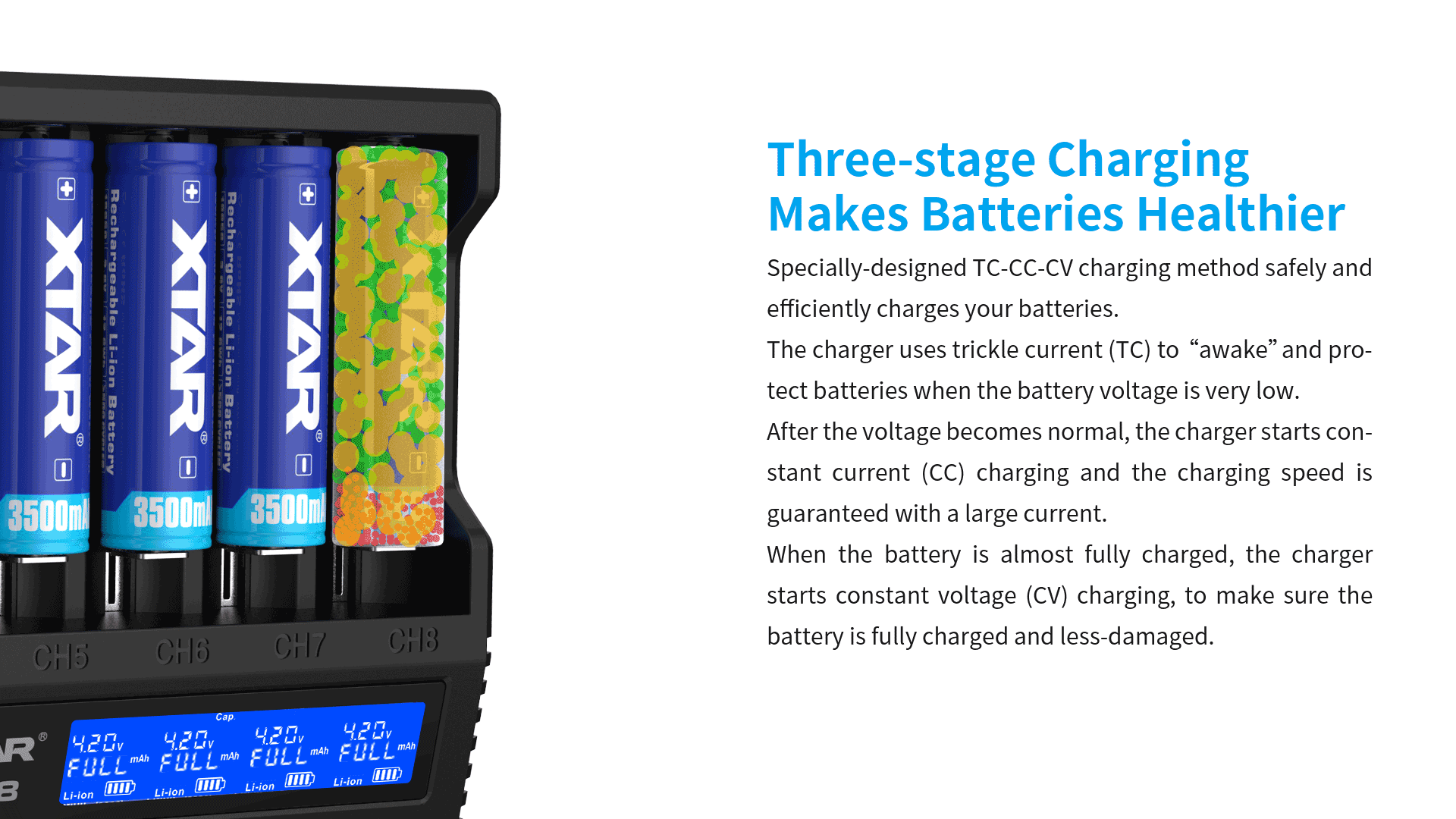
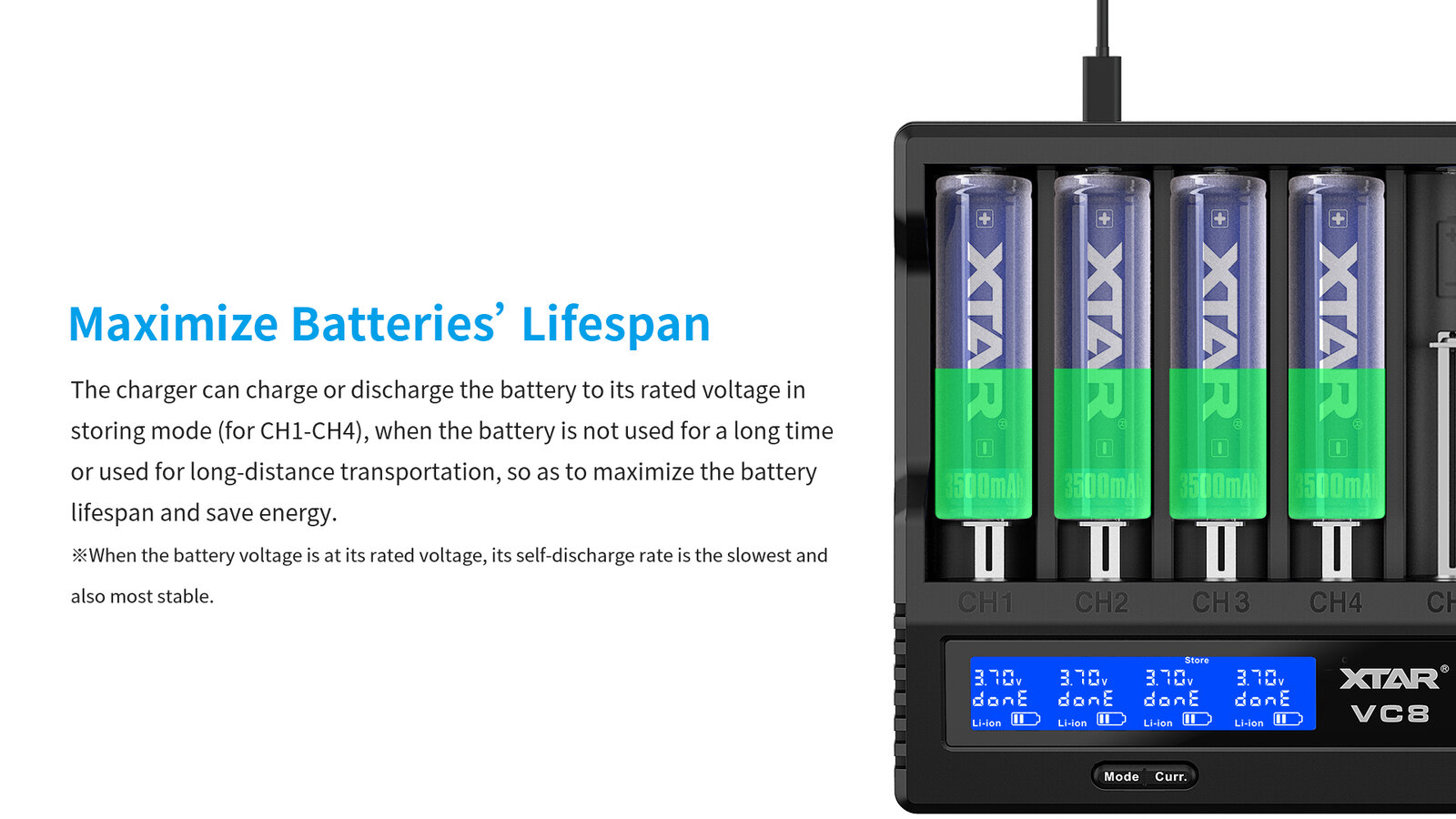
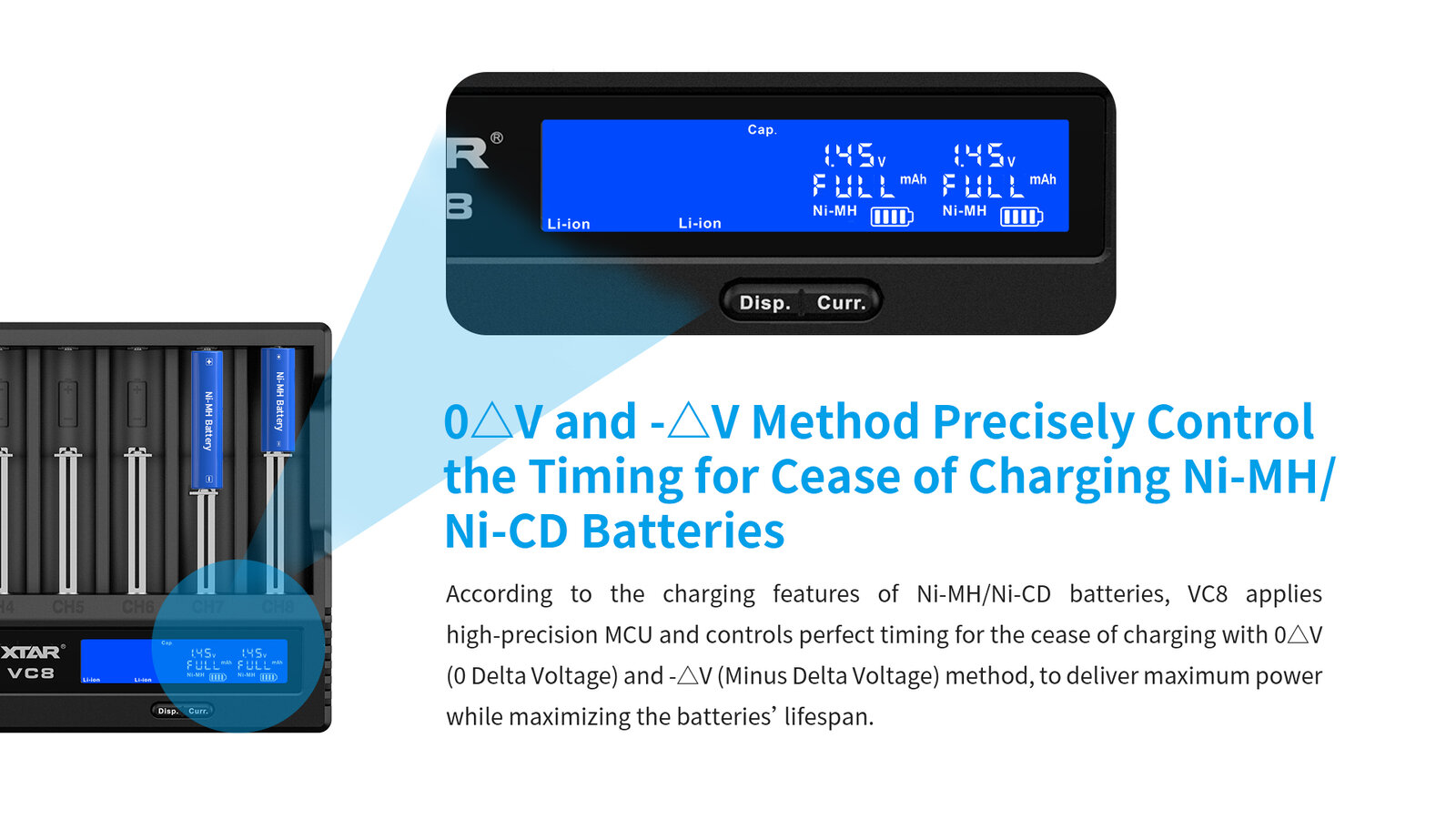
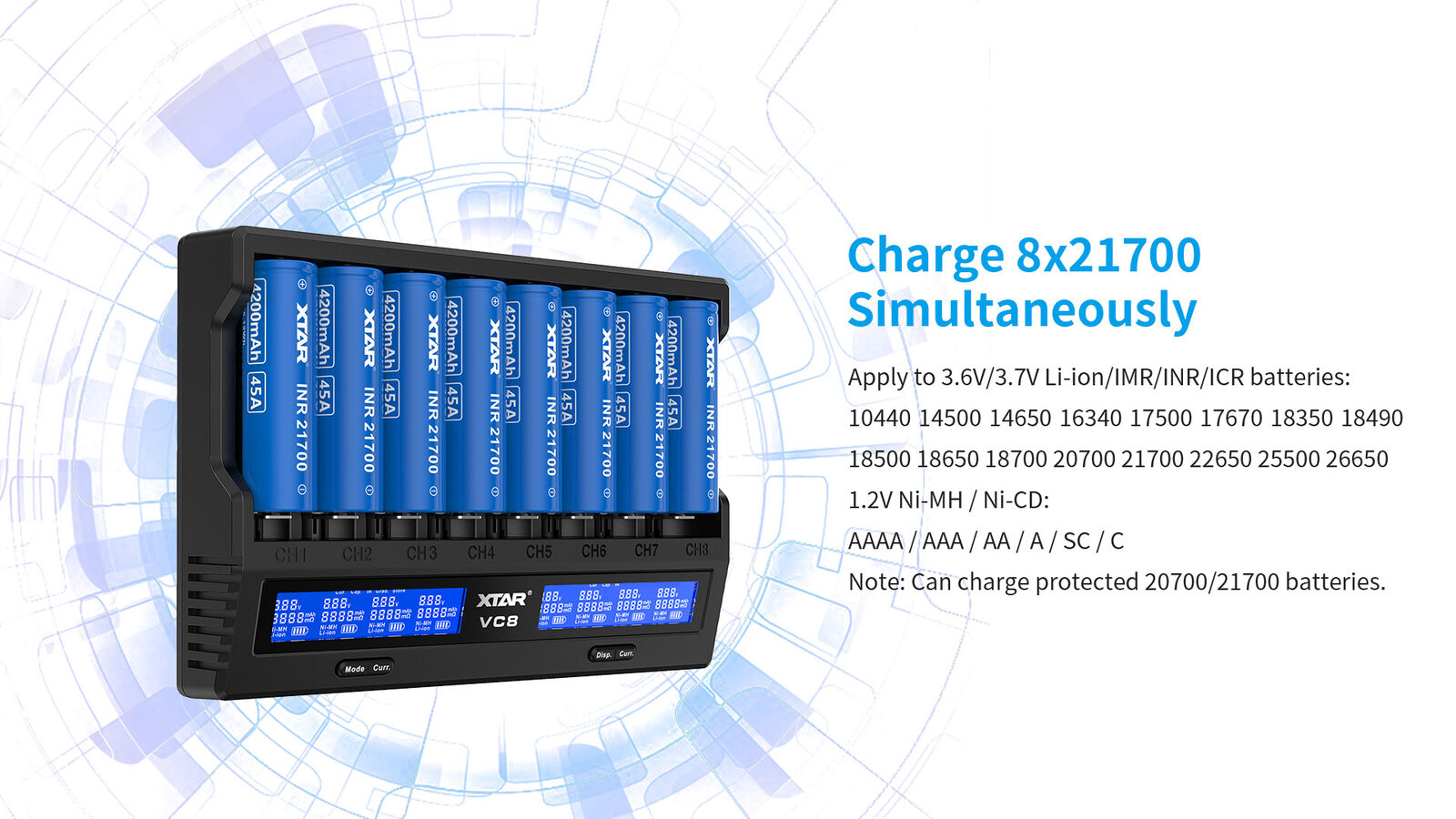
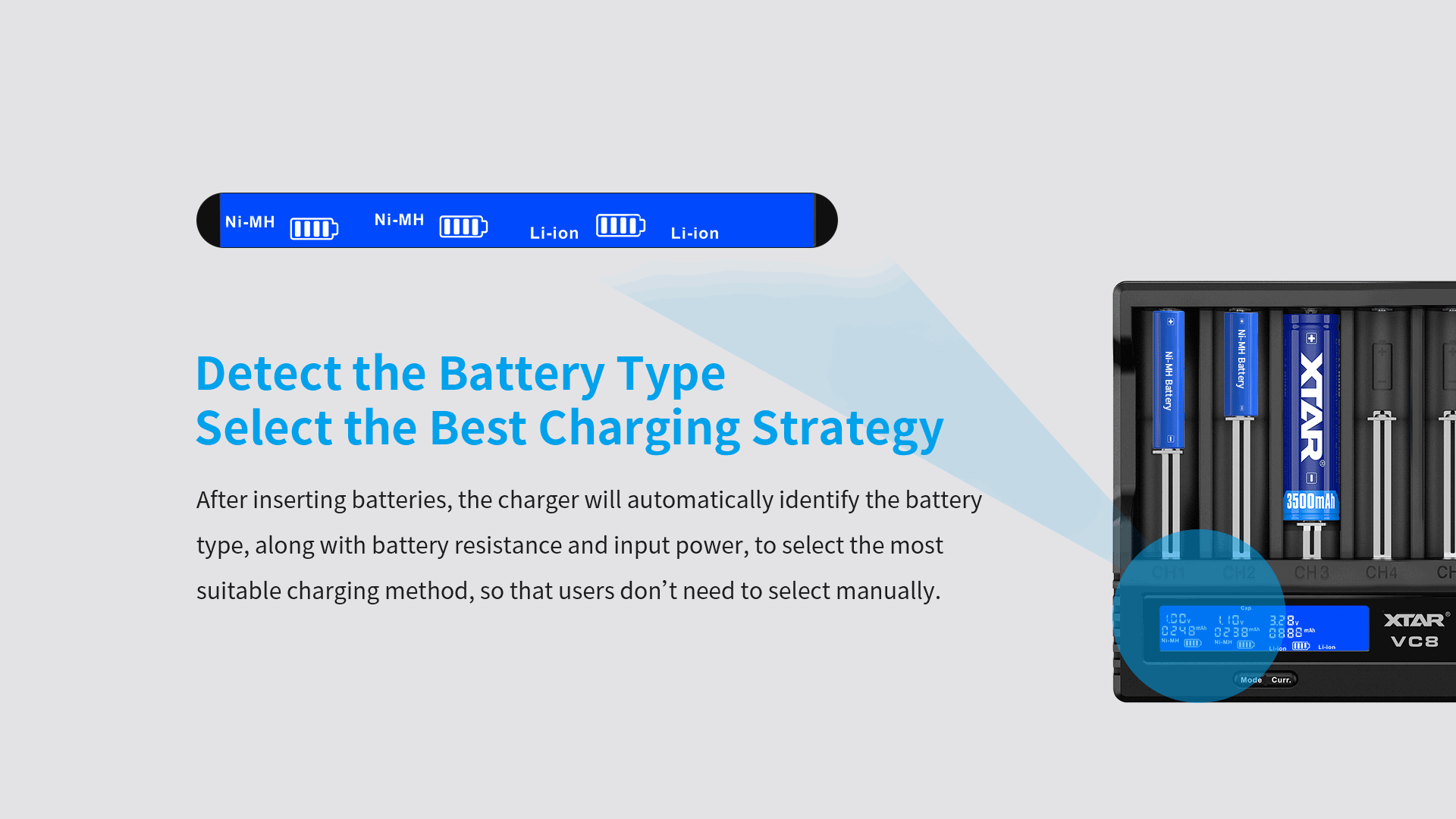
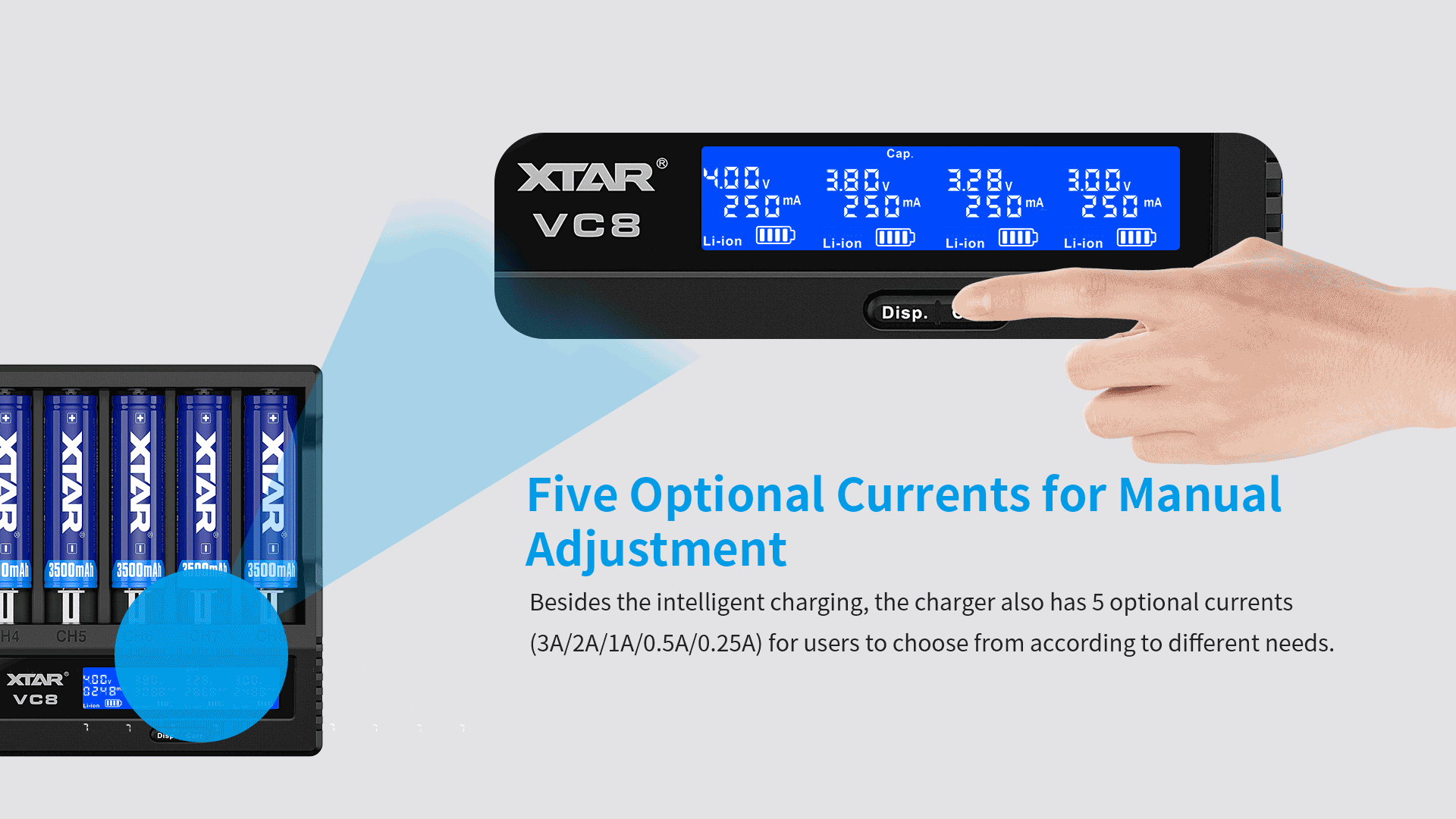

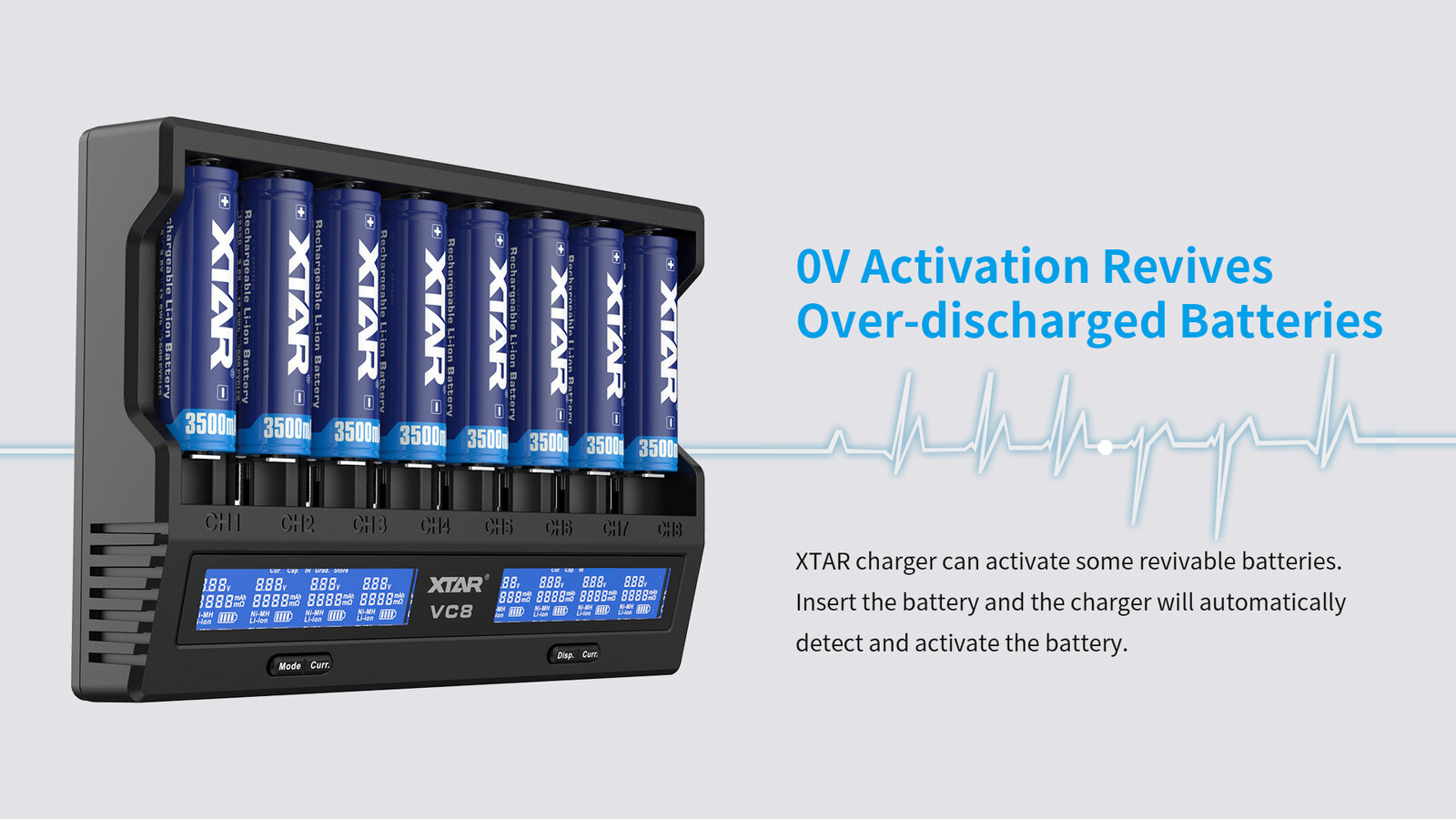

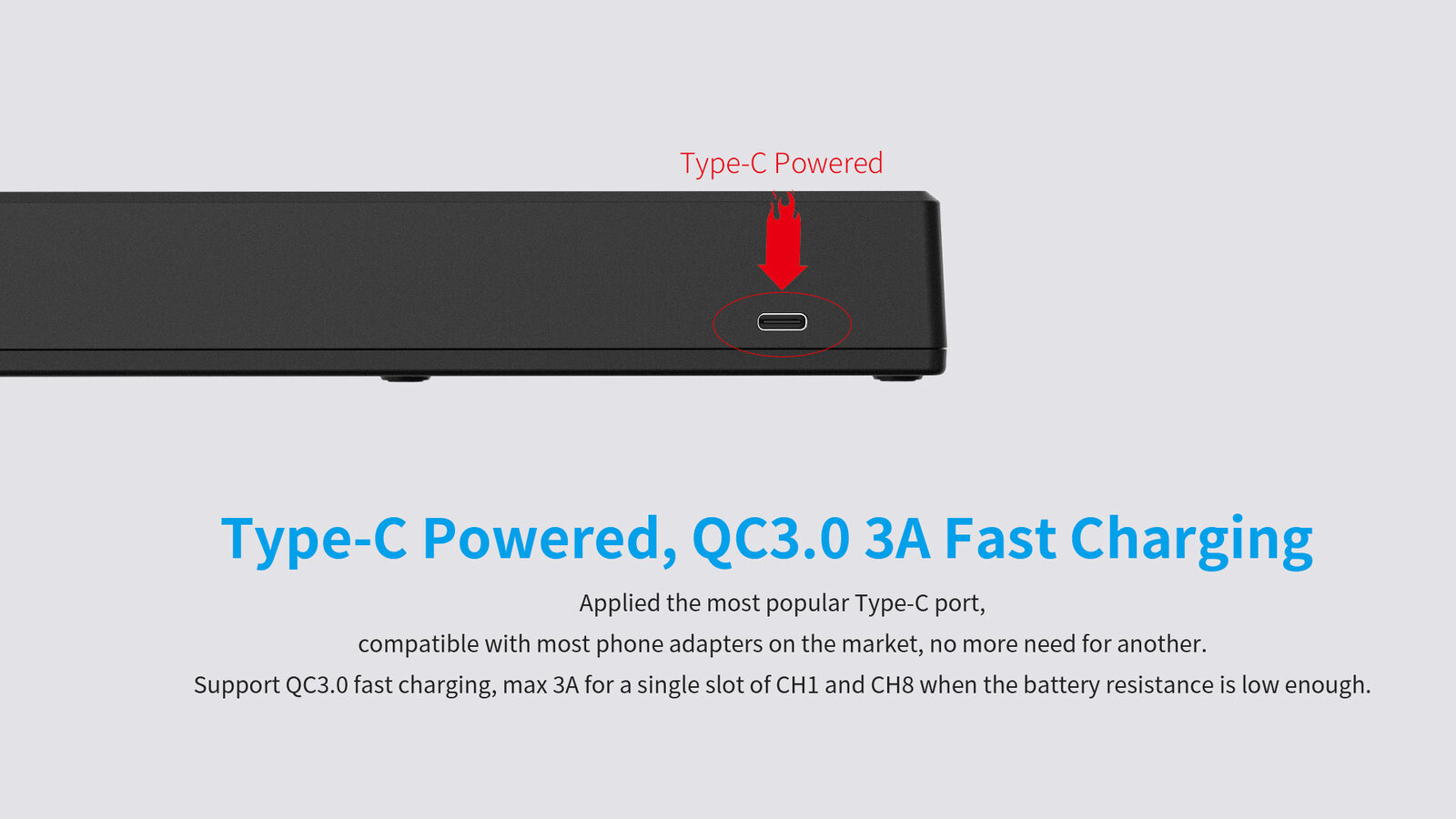
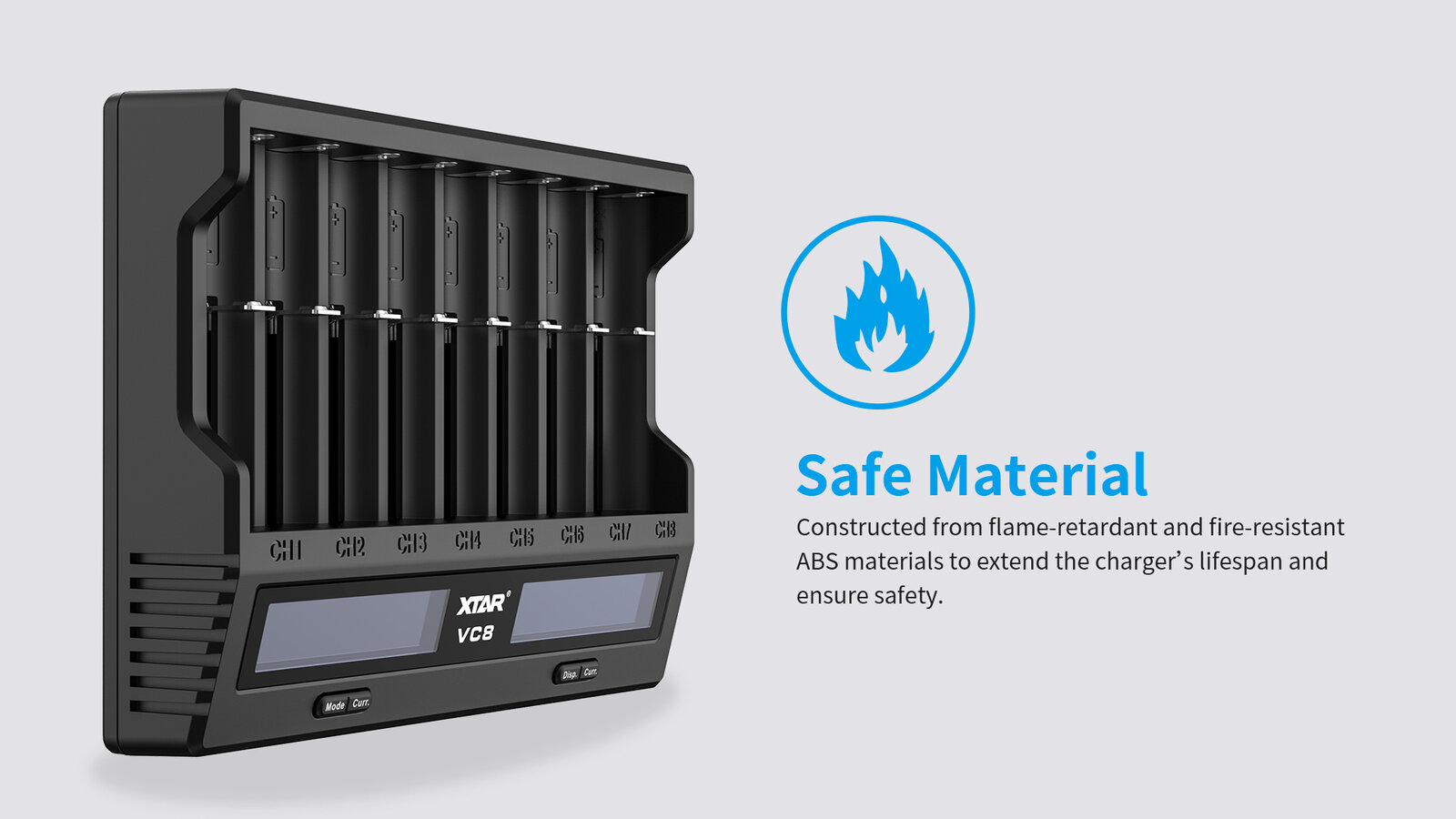
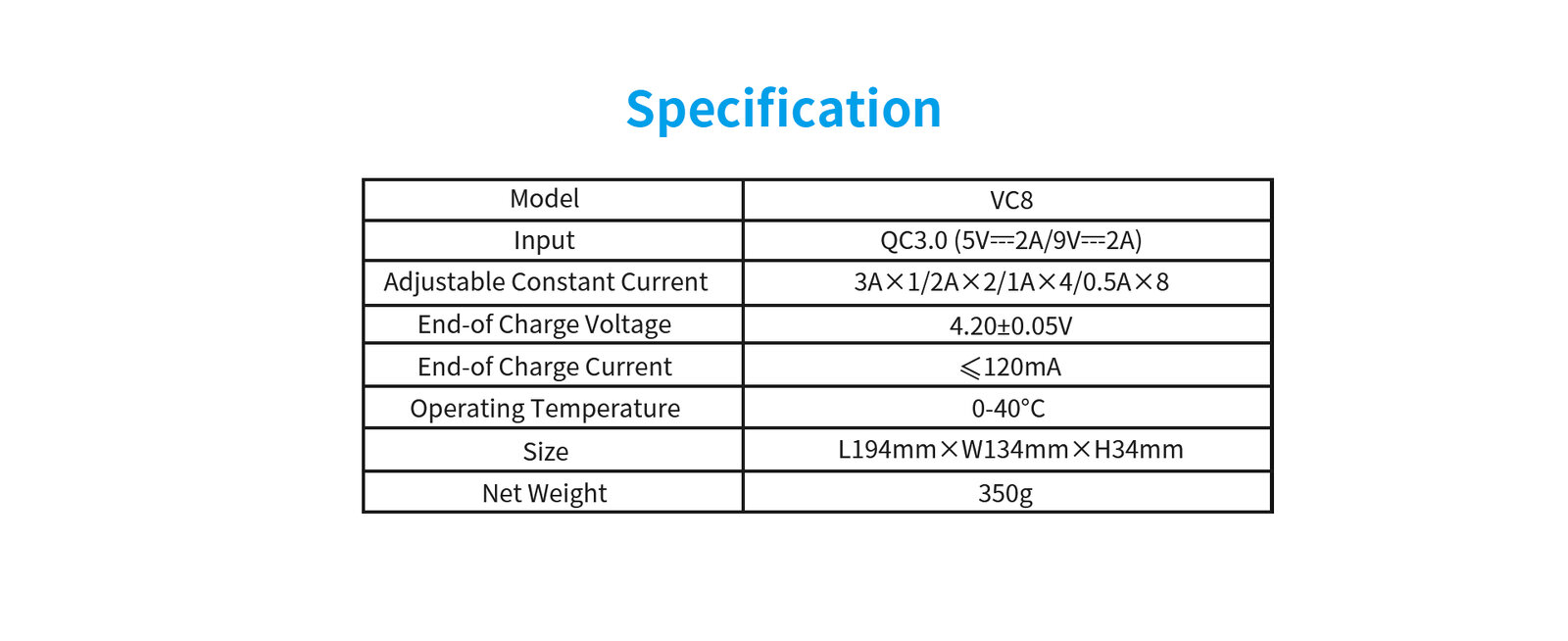
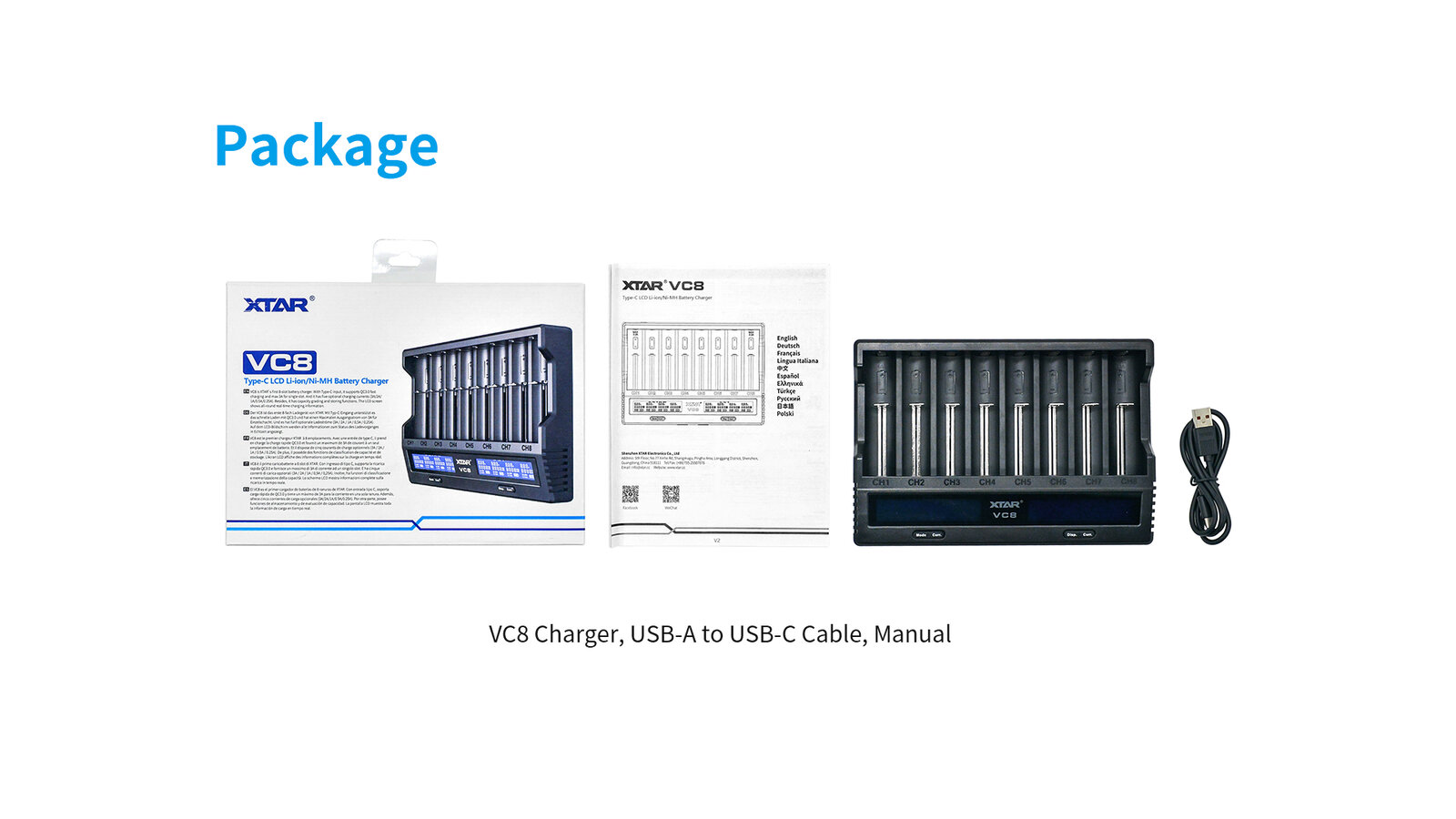
Produkt posiada oznaczenie CE.
- Li-ion batteries 3.6-3.7V, unprotected
- Li-ion batteries 3.6-3.7V, protected (with PCM/PCB)
- Ni-MH batteries
- QC 3.0 (5V/2A | 9V/2A) - USB Type-C Socket
- Processor-controlled TC/CC/CV for Li-ion
- Processor-controlled CC with -ΔV/0ΔV/PVD for Ni-MH
- 1x 3A (only in one of the two extreme channels 1 and 8) 2x 2A / 4x 1A / 8x 0.5A(Po osiągnięciu 2,9V ogniwo ładowane jest stałym prądem o wartości od 0,1A do 1A (zależnie od wykorzystywanego źródła zasilania )
- Li-ion 4.2V ±0,05V
- Reactivation of deeply discharged cells and 0V cells
- Cell capacity measurement
- Against overload / short circuit
- Before reverse polarity of cells
- Charge
- Grade: charge -> discharge -> charge
- Storage - charging for battery storage
- Measurement of internal resistance in mOhm (Quick test)
- Working/Charging Status
- Charging
- Battery voltage
- Charge used to charge the cells
- Internal resistance of cells
- VC8 charger, USB Type-C cable, user manual
- Li-ion batteries 3.6-3.7V, unprotected
- Li-ion batteries 3.6-3.7V, protected (with PCM/PCB)
- Ni-MH batteries
- QC 3.0 (5V/2A | 9V/2A) - USB Type-C Socket
- Processor-controlled TC/CC/CV for Li-ion
- Processor-controlled CC with -ΔV/0ΔV/PVD for Ni-MH
- 1x 3A (only in one of the two extreme channels 1 and 8) 2x 2A / 4x 1A / 8x 0.5A(Po osiągnięciu 2,9V ogniwo ładowane jest stałym prądem o wartości od 0,1A do 1A (zależnie od wykorzystywanego źródła zasilania )
- Li-ion 4.2V ±0,05V
- Reactivation of deeply discharged cells and 0V cells
- Cell capacity measurement
- Against overload / short circuit
- Before reverse polarity of cells
- Charge
- Grade: charge -> discharge -> charge
- Storage - charging for battery storage
- Measurement of internal resistance in mOhm (Quick test)
- Working/Charging Status
- Charging
- Battery voltage
- Charge used to charge the cells
- Internal resistance of cells
- VC8 charger, USB Type-C cable, user manual
